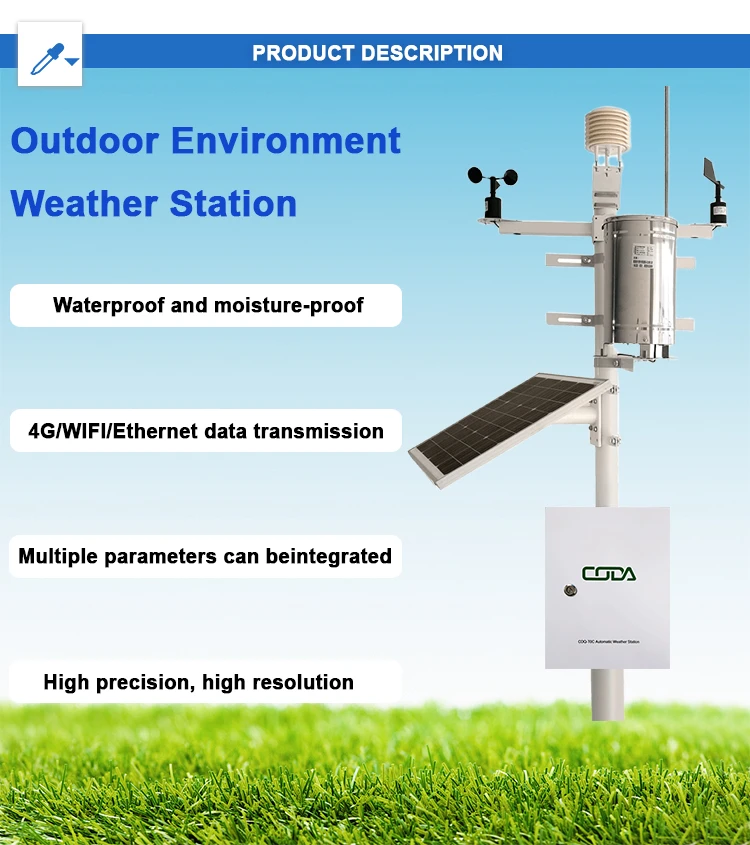Wireless Weather Station Transmission Mode
In today’s weather monitoring, wireless weather stations are very important. Their performance relies heavily on the type of transmission used. This article looks at the different transmission modes of wireless weather stations. It explores their features, benefits, and drawbacks.
1. Radio Frequency (RF) Transmission
RF transmission is a common method used in wireless weather stations. It works by changing weather data into radio signals. These signals are sent over specific frequency bands. This method has several benefits.
First, it has a long transmission range. It can cover several kilometers based on the transmitter’s power and the environment. This makes it good for watching weather in large areas like farms, forests, and remote mountains.
Secondly, RF transmission is fast. This allows for real-time or near-real-time data transfer. Applications that need current weather information, like weather forecasting and aviation weather monitoring, find this very important.
However, RF transmission can be affected by interference from other electronic devices and the environment. For example, power lines or communication towers can cause electromagnetic interference. This can result in data loss or errors.
2. Wi – Fi Transmission
Wi-Fi is very popular in wireless weather stations. This is especially true in cities with existing Wi-Fi. With Wi-Fi, weather stations can connect to local networks. This makes it easy to access and share data.
One of the main benefits of Wi-Fi is its fast data transfer. This helps in quickly sharing large weather data. It includes clear images and detailed sensor readings.
You can easily connect Wi-Fi weather stations to your home or office systems. Homeowners can check the weather in real-time on their smartphones or smart devices. They can use this information to adjust their heating, ventilation, and air conditioning (HVAC) systems.
However, Wi-Fi has a limited range, usually just a few hundred meters. It also needs a stable and reliable network, which may not be available everywhere.
3. Cellular Transmission
Cellular transmission uses mobile networks like 3G, 4G, or 5G to send weather data. This method offers wide coverage. It is good for weather stations in remote areas that lack other communication networks.
Cellular transmission offers fast data transfer. This is especially true with 5G technology. It allows for real-time and high-definition data sharing.
Users can easily manage weather stations that connect to cellular networks from a distance. Meteorological agencies can access and control these stations from anywhere. They only need a cellular network connection.
Cellular transmission has data charges. This can be a big cost, especially for stations that create a lot of data.
There may be issues with network congestion in some places. This can slow down data transfer and make it less reliable.
4. Satellite Transmission
Satellite transmission is a long-range and reliable choice for wireless weather stations. This is especially true for stations in extremely remote or hard-to-reach places.
Weather stations with satellite communication can send data to satellites in space. These satellites then send the information back to ground stations. This method provides global coverage.
It helps users collect weather data from distant places on Earth. This includes the polar regions and the ocean.
Satellite transmission is very reliable. It is less affected by local environmental factors than other methods.
Satellite-based systems are costly to install and maintain. The price of satellite equipment and service fees can be too high for some users. Also, there may be a small delay in data transmission due to the long distance the signals must travel.
Conclusion
Each transmission mode of wireless weather stations has unique features, benefits, and drawbacks. The choice of data transmission depends on several factors. One important factor is the locati0n of the weather station.
– The speed at which data must be sent matters.
– The available infrastructure is a factor.
– The budget also plays a role. By knowing these different ways to transmit data, meteorologists and others can make smart choices. This helps them collect weather data accurately and efficiently.
Wireless networks have many benefits, but they also have some problems. These problems include signal interference, delays, and areas with weak or no coverage. When setting up a weather station, think carefully about the network, data needs, and budget.
In some cases, using both wired and wireless networks can improve data transmission. For example, if a weather station has wired access, it will use wired networks. This is how it transfers data. The weather station may be in a remote area or it could be mobile. In these cases, it will rely mostly on wireless connectivity.
